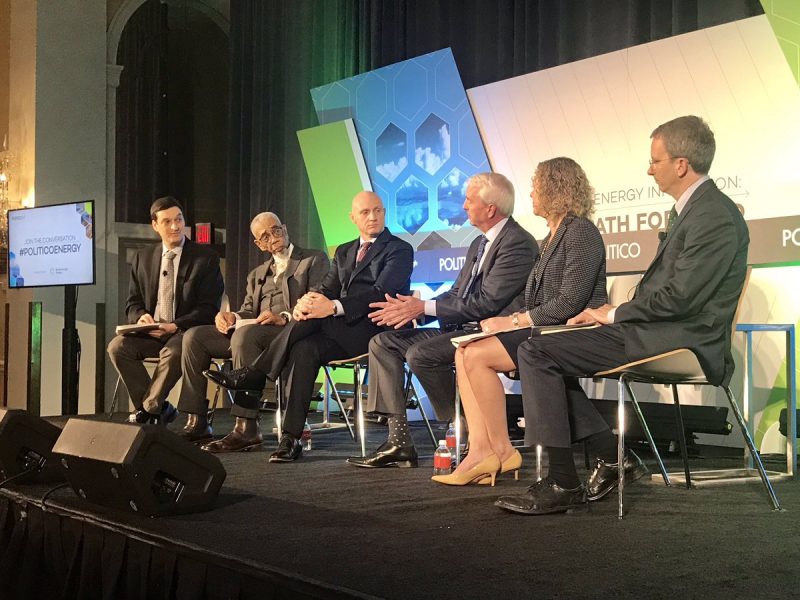Federal, state policymakers need to support wide-scale renewable energy deployment

State and federal policies must incentivize the leap from small-scale research to large-scale commercial development if they want electric utilities to use more renewable energy, Xcel Energy Chief Executive Officer Ben Fowke said this week at a panel on how utilities can incorporate the latest technological innovations in renewable energy.
“We need to recognize economies of scale. We need to recognize that affordability and reliability can never be shortchanged, and sometimes there’s unintended legislation and policy that is contrary to those goals,” Fowke said at a Feb. 6 panel moderated by news organization Politico and sponsored by Breakthrough Energy, a coalition of investors seeking to support renewable energy technologies.
Denver-based Xcel, which supplies power to customers across eight Midwestern and western states, outlined a goal last December to provide electricity that is 100 percent carbon-free by 2050 and by 2030, reduce carbon emissions by 80 percent of 2005 levels. Xcel also expects renewable energy to be 50 percent of its energy mix by 2024 and 60-70 percent by 2030, Fowke said.
Customer preferences enabled Xcel to transition to using more renewable energy resources, Fowke said. Power generation from renewables also became much more affordable. Ten years ago, wind generation cost $65/unit, solar cost $160+/unit and natural gas was $10/unit. Today, Xcel buys wind generation at under $20/unit, solar at $30-$45/unit and natural gas at $2/unit, he said.
One area where innovative technology must be deployed is with the energy grid, which was built to accommodate the traditional dispatch of power generation, Fowke said. The power sector and regulators need to consider investing in cyber-compliant, two-way technologies to enable the grid both to dispatch and receive power, he said.
The power sector will also need to ramp up its use of dispatchable, zero-emissions technology, which is technology that allows utilities to store power safely and access it when needed. These technologies include carbon sequestration, which entails removing carbon dioxide from the atmosphere and storing it as a solid or liquid; the hydrogen economy, which is the deployment of low-carbon fuels such as natural gas; and the next generation of nuclear energy and its emphasis on passive safety systems.
As the power sector explores using these technologies, state and federal regulators must also draft policies that encourage the development of these technologies without giving preference to one technology over another, Fowke said.
“As we innovate on technology, we have to innovate on regulation too,” Fowke said.
Businesses seeking to develop these technologies will need state and federal policies that encourage cost transparency and emphasize business incentives, such as energy tax policies, in addition to continued support for research and development, according to fellow panelist Lisa Jacobson, president of the Business Council for Sustainable Energy, a coalition of trade groups and associations representing energy efficiency, renewable energy and natural gas.
“There needs to be market signals to drive investment that’s consistent with the project cycles of the business community,” Jacobson said.
State policymakers in particular have the ability to explore different types of technology and policy models that fit the needs of their state, she said.
“I don’t think a heavy hammer is needed…it’s a mix of policies and making sure that they’re in line with the investment cycle of the private sector,” Jacobson said.
Federal policymakers, meanwhile, should also consider developing market-based standards to set a baseline, according to panelist Derek Murrow, senior director for the climate and clean energy program of the Natural Resources Defense Council. One example standard is the appliance and equipment efficiency standard, which sets minimum energy conservation standards for more than 60 categories of appliances and equipment. The U.S. Department of Energy administers the efficiency standard program.
Federally supported research and development and energy deployment incentives such as state tax incentives are also ways to encourage the power sector to deploy and use more renewable energy, Murrow said.
